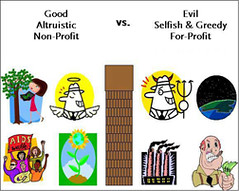Despite having the disadvantage of returning for a summer rerun schedule during a long holiday weekend when many people were traveling, Jericho won its July 6 time slot. This leaves everyone, including E! Online and Buddy TV wondering whether Jericho succeeded in capturing new viewers or those responsible for the cancellation protest.
Given all the curiosity that non-viewers have, wondering what they missed before the controversial cancellation; the enthusiasm of existing fans; and several creative though inconsistent fan-generated campaigns; I'm more convinced than either entertainment media outlet: the bulk of the Nielsen families watching the show were primarily new viewers and the most diehard of Rangers (those fans who could watch a rerun front-to-back and back again).
However, I'm less convinced that the recap show did much to secure new viewers as this spliced together story line was just as jarring as it was when Jericho returned from that ill-fated mid-season hiatus last time. But, the only indication we will have whether the strategy to air the recap (and not another regular show) worked will be the number of viewers who stayed on for the full episode at 10 p.m.
It seems to me that recap shows appear to work better for reality TV than serial dramas, and even then those are painful to watch. That said, perhaps a better indication of Jericho's future success will be if items like the May 29 edition of Daily Variety that is up for auction on eBay will actually sell.
With a starting bid of $2.99 and s/h cost of $5.30, I can only imagine what that might one day mean for those who purchased fan-generated items prior to the return of the show (or the six people who won Copywrite, Ink. "Covering Nuts" T-shirts after I spoke at yesterday's IABC/Las Vegas luncheon).
Will Jericho memorabilia eventually match Veronica Mars or The Black Donnelley? I suspect we really won't know until more episodes are ordered for Season 2 or CBS commits to a Jericho Season 3.
In the interim, there are several interesting online consumer marketing approaches out there and today I'll mention two. First is Remote Access's weekly Jericho guest blogger feature. Second is the art for Jerichon 2007 produced by "rubberpoutry" for Guardians of Jericho as it appeared in the Jericho Times.
Jerichon is a convention being held by fans in the least likely convention hotspot of Oakley, Kansas. While some fans were concerned about the lack of accommodations in Oakley (despite Oakley having some Jericho-like characteristics), the Hays Daily News is all abuzz about the prospect of welcoming 300-500 attendees in a somewhat off the beaten path location. Then again, you never know. No one expected thousands of wayward rockers at Woodstock either.
In sum, although CBS, E! Online, and Buddy TV are sure to be watching the summer rerun ratings (that’s what they do), it might be everything but ratings that indicate the true temperature of this famous fan base. Hot or cold may ultimately be the indicator that attracts new viewers or not. It certainly won’t be CBS marketing efforts.

Given all the curiosity that non-viewers have, wondering what they missed before the controversial cancellation; the enthusiasm of existing fans; and several creative though inconsistent fan-generated campaigns; I'm more convinced than either entertainment media outlet: the bulk of the Nielsen families watching the show were primarily new viewers and the most diehard of Rangers (those fans who could watch a rerun front-to-back and back again).
However, I'm less convinced that the recap show did much to secure new viewers as this spliced together story line was just as jarring as it was when Jericho returned from that ill-fated mid-season hiatus last time. But, the only indication we will have whether the strategy to air the recap (and not another regular show) worked will be the number of viewers who stayed on for the full episode at 10 p.m.
It seems to me that recap shows appear to work better for reality TV than serial dramas, and even then those are painful to watch. That said, perhaps a better indication of Jericho's future success will be if items like the May 29 edition of Daily Variety that is up for auction on eBay will actually sell.
With a starting bid of $2.99 and s/h cost of $5.30, I can only imagine what that might one day mean for those who purchased fan-generated items prior to the return of the show (or the six people who won Copywrite, Ink. "Covering Nuts" T-shirts after I spoke at yesterday's IABC/Las Vegas luncheon).
Will Jericho memorabilia eventually match Veronica Mars or The Black Donnelley? I suspect we really won't know until more episodes are ordered for Season 2 or CBS commits to a Jericho Season 3.
In the interim, there are several interesting online consumer marketing approaches out there and today I'll mention two. First is Remote Access's weekly Jericho guest blogger feature. Second is the art for Jerichon 2007 produced by "rubberpoutry" for Guardians of Jericho as it appeared in the Jericho Times.
Jerichon is a convention being held by fans in the least likely convention hotspot of Oakley, Kansas. While some fans were concerned about the lack of accommodations in Oakley (despite Oakley having some Jericho-like characteristics), the Hays Daily News is all abuzz about the prospect of welcoming 300-500 attendees in a somewhat off the beaten path location. Then again, you never know. No one expected thousands of wayward rockers at Woodstock either.
In sum, although CBS, E! Online, and Buddy TV are sure to be watching the summer rerun ratings (that’s what they do), it might be everything but ratings that indicate the true temperature of this famous fan base. Hot or cold may ultimately be the indicator that attracts new viewers or not. It certainly won’t be CBS marketing efforts.





















